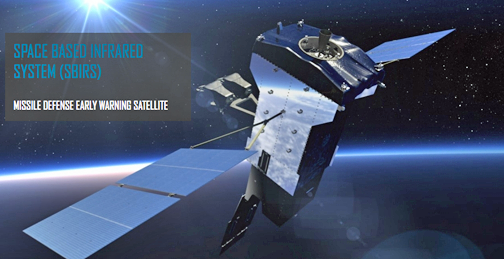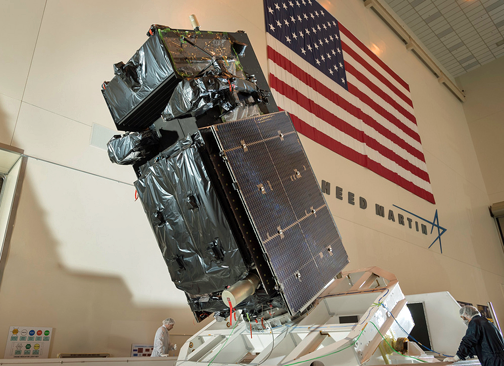
The U.S. Air Force and Lockheed Martin (NYSE: LMT) have delivered the next Geosynchronous Earth Orbit (GEO) satellite for the Space Based Infrared System (SBIRS) to Cape Canaveral Air Force Station, Florida.

SBIRS enhances the military's ability to detect missile launches, supports ballistic missile defense, expands technical intelligence gathering, and bolsters situational awareness on the battlefield. The Air Force’s next SBIRS satellite — GEO Flight 4 — is slated to launch in January aboard a United Launch Alliance Atlas V rocket. SBIRS GEO Flight 4 follows the Air Force’s GEO Flight 3 satellite, which launched on January 20, 2017, and in March sent its first images back down to Earth, a milestone known as "first light."
The next SBIRS satellites, GEO-5 and GEO-6, currently in production, incorporate Lockheed Martin’s new, modernized LM 2100 spacecraft to dramatically reduce costs and cycle times, while improving resiliency and increasing the potential to incorporate future, modernized sensor suites.

The Air Force’s SBIRS includes a combination of satellites in GEO orbit and hosted payloads in Highly Elliptical Orbit (HEO). A robust, new ground control system serves as the nerve center for the entire constellation, collecting large amounts of data from the satellites’ powerful sensors and converting it into actionable reports for defense, intelligence and civil applications.
Lockheed Martin manufactured the SBIRS GEO Flight 4 satellite at the firm's Sunnyvale, California, facility. For the trip to Florida, the satellite rode in a Lockheed Martin-built C-5 Galaxy aircraft from nearby Moffett Federal Air Field in Sunnyvale.

Lockheed Martin's SBIRS GeoFlight4 satellite at the company's manufacturing facility. Photo is courtesy of Lockheed Martin.
The SBIRS development team is led by the Remote Sensing Systems Directorate at the U.S. Air Force Space and Missile Systems Center, Los Angeles Air Force Base, California. Lockheed Martin Space Systems, Sunnyvale, California, is the SBIRS prime contractor, with Northrop Grumman Aerospace Systems, Azusa, California, as the payload integrator. The 460th Space Wing, Buckley Air Force Base, Colorado, operates the SBIRS system.
Tom McCormick, VP of Lockheed Martin's Overhead Persistent Infrared systems mission area, noted that SBIRS provides the military with timely, reliable and accurate missile warning and infrared surveillance information.

